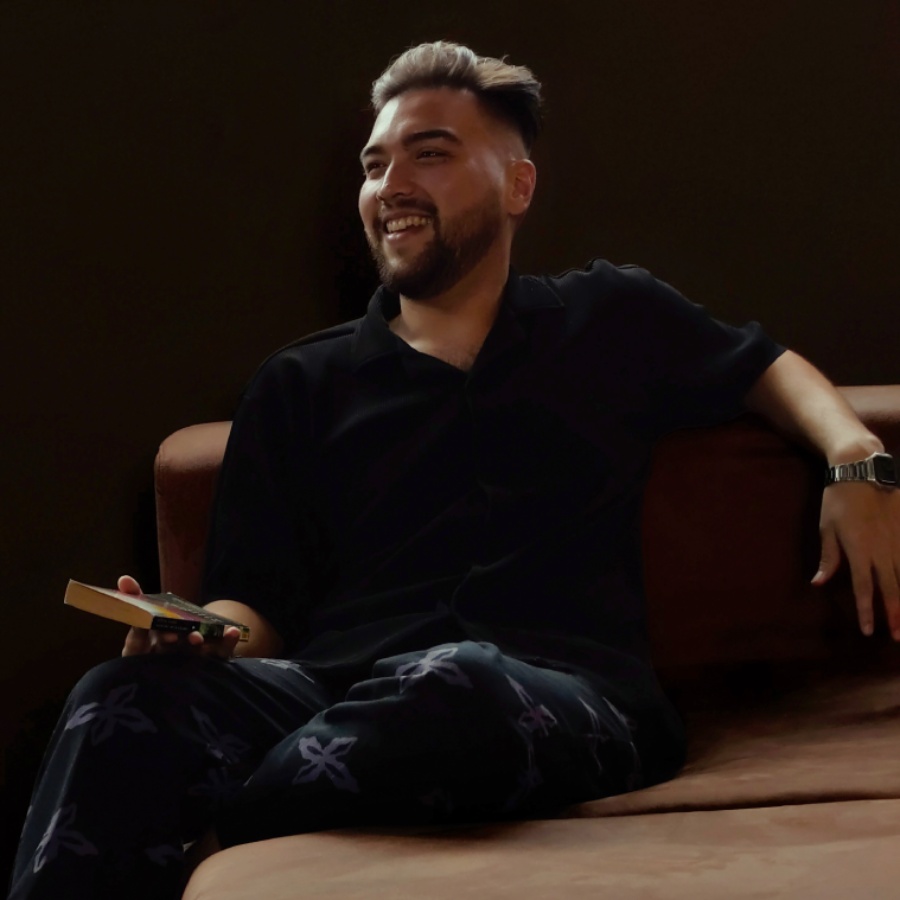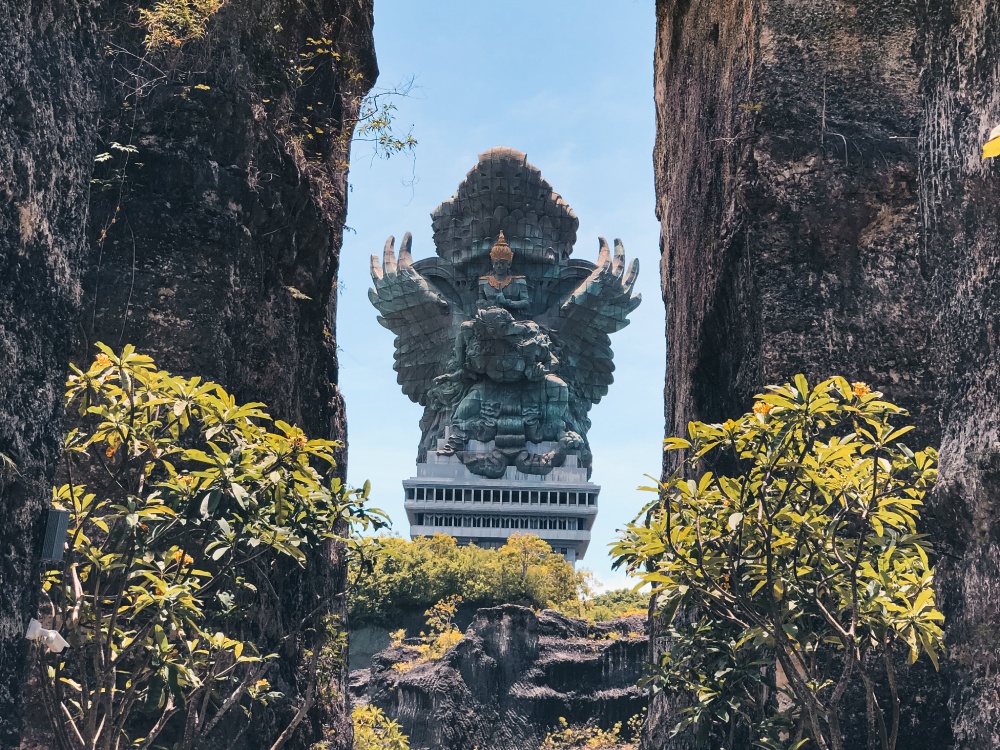
Uluwatu – a region that makes up the southwestern tip of Bali’s Bukit Peninsula is one of the most sought-after destinations for tourists and locals alike. Blessed with some of the most breathtaking coastal scenes, from its pristine beaches and stunning cliffs to iconic landmarks and historical sites, Uluwatu is where one can experience both leisure and culture.
In this NOW! Bali Guide, we take you on the ultimate day trip along Uluwatu to discover some of the region’s most treasured destinations. The name Uluwatu itself is derived from the word ulu meaning ‘land’s end’, and watu meaning ‘rock’, fitting for its location on Bali’s southernmost cliff edge.
For travellers unfamiliar with navigating through Bali, hiring a car with a driver is highly recommended. However, if you’re up for an adventure to get the full island experience, going on a motorbike is more convenient as you’ll come across narrow and rocky roads along the way. But safety always comes first! Only go on a motorbike if you can drive one, wear the proper safety gear, and have the proper license.
Begin your journey with a cultural trip to one of Bali’s most phenomenal landmarks: Garuda Wisnu Kencana (GWK) Cultural Park, a tourist destination and attraction in Ungasan. The massive cultural destination spans 60 hectares and is dedicated to the Hindu god Wisnu, and his mount, Garuda, the mythical bird who became his companion. The park offers a glimpse into Bali’s rich historical heritage through magnificent sculptures, captivating cultural performances, mythological folklore tales, and dramatic cinematic presentations.
The park is home to the monumental Garuda Wisnu Kencana statue, the tallest statue of a Hindu deity and the tallest statue in Indonesia. Designed by legendary Indonesian sculptor and artist, I Nyoman Nuarta, in collaboration with up to 120 artists, construction of the GWK statue began in 1997 but took nearly three decades before it was finally completed and officially inaugurated in 2018.
Depicting Wisnu mounting Garuda, the 75-metre tall and 65-metre wide statue sits on a 46-metre pedestal with an overall height of 121 metres, made up of a staggering 4,000 tonnes of copper and bronze slabs. Upon your descent to the island, you’ll get a bird’s eye view of this majestic statue from high above the sky.
In addition to the GWK statue, the parkland comprises various zones, each exuding its own sights and attractions. The first zone you’ll come across is Plaza Wisnu, which features a 20-metre sculpture depicting the head and bust of Wisnu, where the plaza hosts regular cultural performances. Surrounding the plaza are holy water wells and the Parahyangan Somaka Giri fountain, a sacred fountain believed to bear magical healing abilities.
A short walk from Plaza Wisnu is Plaza Garuda which showcases a sculpture depicting the head of the mythical Garuda. From Plaza Garuda, the area opens up to the Lotus Pond, the park’s largest outdoor area at the heart of the park, enclosed by exotic giant quarried limestone blocks that are covered by gorgeous fertile greenery.
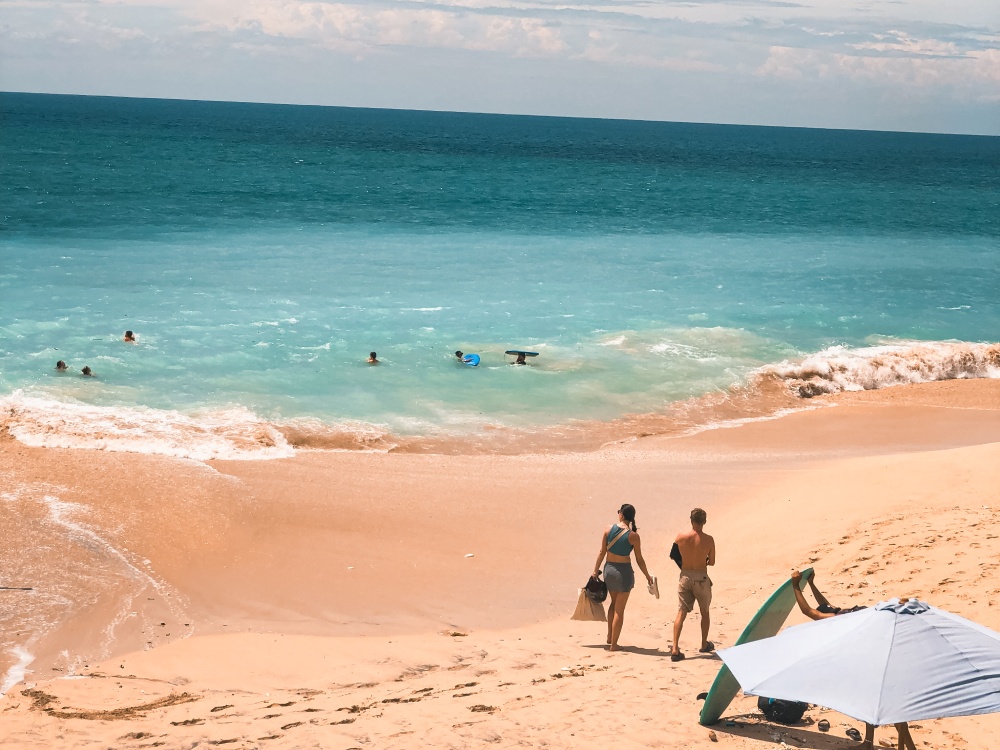
Approximately 25 minutes from GWK Cultural Park, you’ll arrive at Dreamland Beach, located within the New Kuta Golf complex in Pecatu. Reaching the beach, you’ll pass by small roads and local villages, where a dedicated car park is available, though it will be quite a walk to the beach. If you’re going on a motorbike, you can drive through the winding brick roads amidst the grassy hills straight to the beach entrance, where you can park your bike along the side of the road.
A short descent down the concrete stairs will take you to the pristine white sands and azure blue waters of this beach. Boasting an approximately 200-metre stretch, Dreamland Beach is surrounded by towering cliffs and, as its name suggests, is one of the most popular beaches in the area unsurprisingly crowded with sun-seekers and wave-chasers.
Here, you’ll find crowds lazing under the sun, tanning on the rows of sun loungers and beach umbrellas, swimming in the clear waters, riding the waves, or simply basking amidst the picturesque landscape. Elevated on concrete structures just behind the beach, you can grab a bite and drinks from a variety of local beachside restaurants and bars.
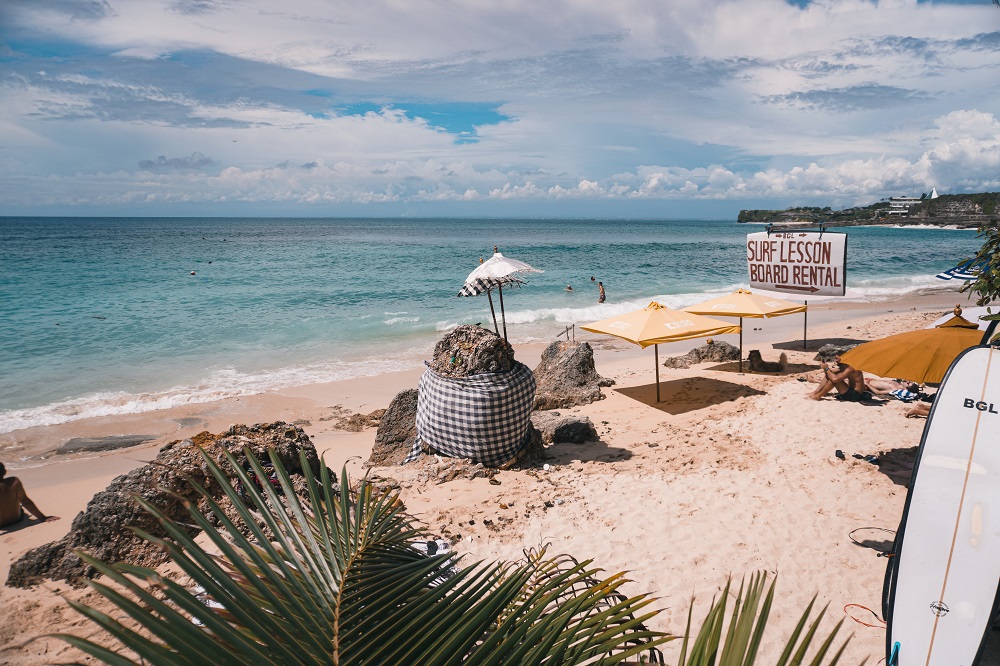
Onto the next beach oasis, a short drive away, you’ll pass lush greenery, charming villas and homestays, small eateries and local residences to Bingin Beach. This beach is another top destination for beachgoers and surfers, with many flocking to the pristine coastline to catch the surf breaks or simply enjoy a fine day at the beach.
Bingin Beach has no direct access to the beach so visitors will have to park their vehicles at the parking space atop the cliffs. From there, the adventure begins! Follow the signs or ask the friendly locals for directions, you’ll pass by homestays and eateries until you come across a narrow paved alleyway that will take you to a set of stairs down to the beach
Descending the set of stairs, the path branches off into several different directions but worry not, whichever path you take, rest assured you’ll eventually emerge on the shoreline. What makes Bingin so unique is the various accommodations that perch on the cliffside, which makes for a great photo-op if you’re looking across from a beach standpoint. Along the beach, local beach bars and restaurants adorn the beach stretch where Bingin Beach can get quite busy so it may be somewhat difficult to find a good spot to settle down.
Located a mere 9-minute drive from Bingin Beach you will reach Padang-Padang Beach, a highly popular and one of the busiest beaches in Uluwatu. Along the way, you might notice that the area is much more developed than the rural roads to Dreamland and Bingin, where you’ll find plenty of well-known restaurants and café chains. Some even say that this area is now the Canggu of Uluwatu due to its vast development.
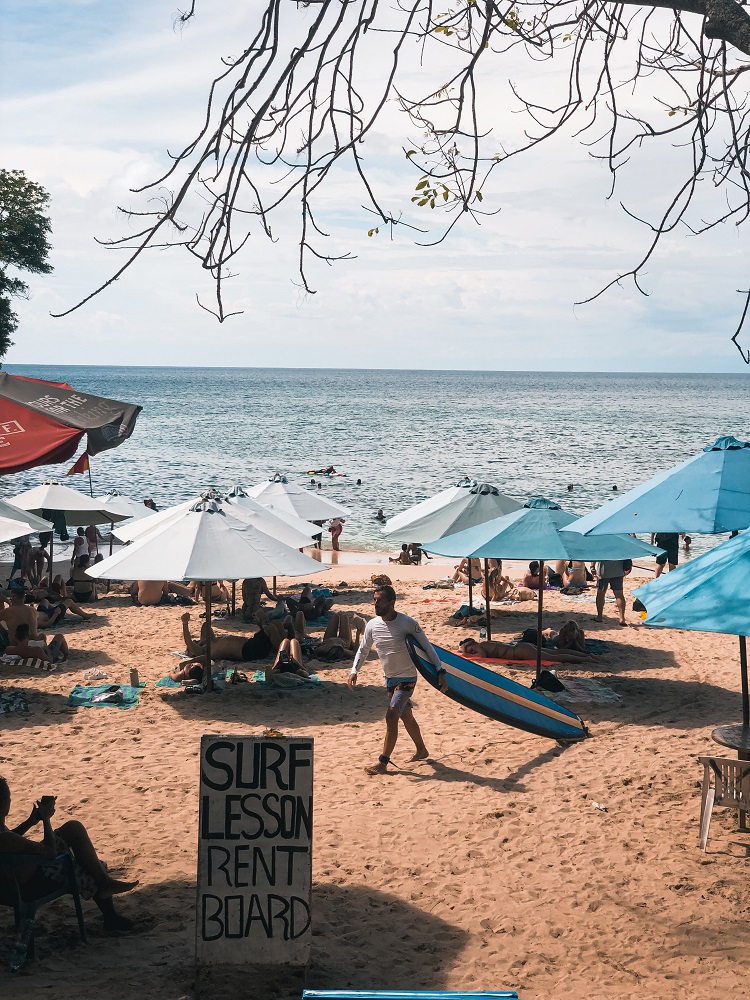
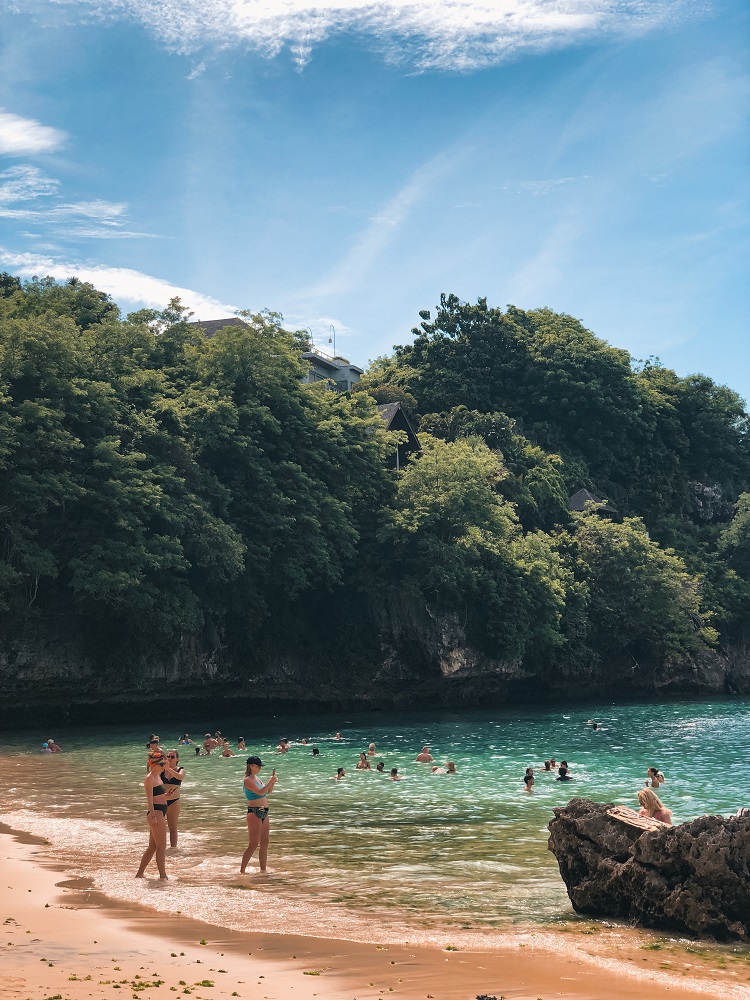
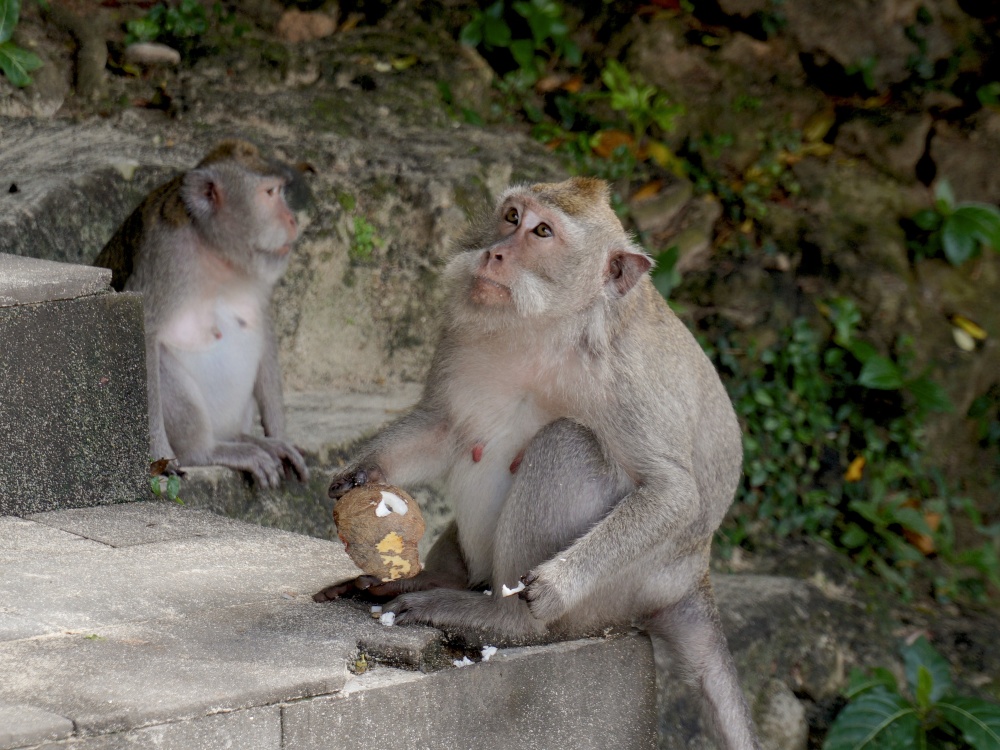
This beach has a spacious parking lot conveniently located adjacent to the ticket booth at the top of the entrance. The path to the beach is quite fascinating as you go down a narrow staircase that leads you through a limestone cave to the beach. Beware! You might find some cheeky monkeys along the way so always be aware of your belongings.
Emerging at the beach, you’ll discover a charming enclave, a semi-circular cove that is surrounded by lush foliage where the soft sand and turquoise waters beckon for a cooling dip. The cove’s calm waters and small current provide the ideal beach to go for a swim.
The beach boasts plenty of space to hide under the shade of the cliffs or find a spot to tan at the centre of the beach. This popular sunbathing hotspot gets very busy during the day, where you’ll find beachgoers lying down under the umbrella.
There are plenty of opportunities to explore around the foot of the cliffs during low tide. To your left, alongside the cliff’s edge, you can find small caves and to your right, you’ll discover a set of stairs that lead you to the top of a natural rock formation where a small Balinese temple lies, a charming little spot that provides a great vantage point to take scenic photos.
Next, we take you to Suluban Beach, Bali’s very own surfer’s mecca a quick drive from Padang-Padang Beach. As one of the most world-renowned beaches in Uluwatu, Sulubuan Beach is not only popular amongst surfers but there are a lot of leisurely things to do for non-surfers.
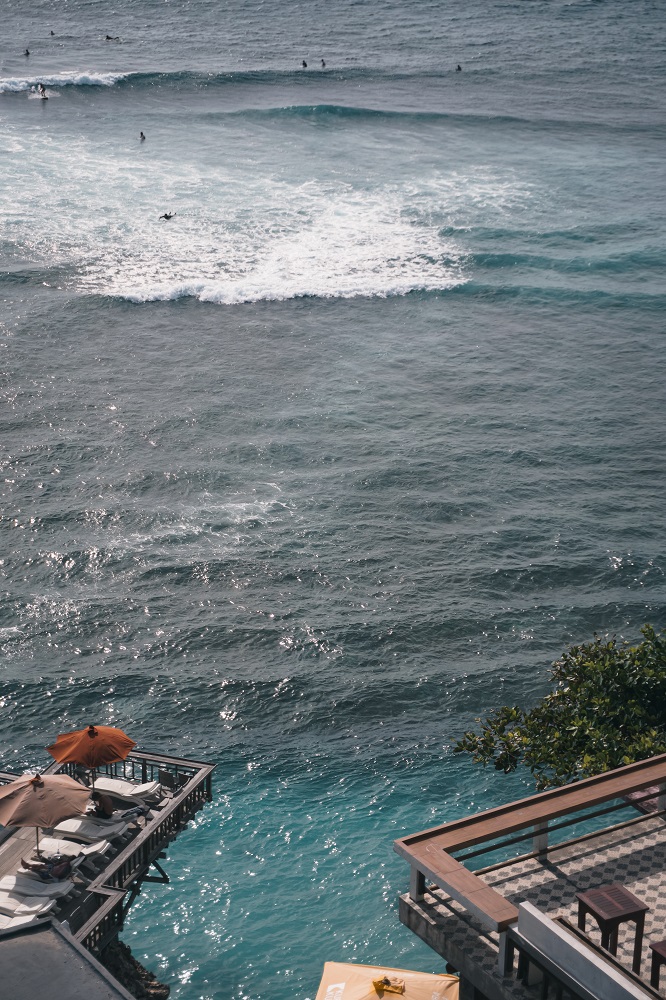
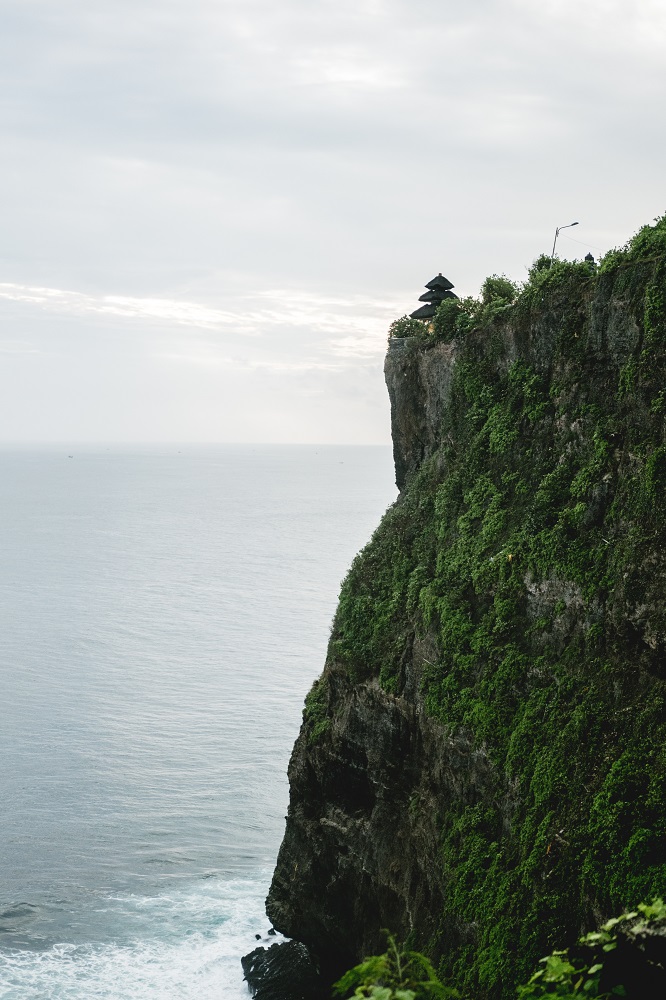
From the parking lot, it’s quite a walk down the concrete stairs that crisscross past numerous clifftop bars, local cafés, souvenir shops and surfboard rental shops before you finally surface on Suluban Beach Cave. If you’re expecting to swim or sunbathe at this beach, you may be disappointed as the tides that roll into the cave can be quite unpredictable and can be potentially dangerous. It is, after all, a surfer’s destination, and this cave is the main entry and exit point for advanced surfers bold enough to face the legendary waves of Suluban Beach.
A great pastime for non-surfers is to marvel at the mesmerising ocean views and soak in the Bali sun from the various clifftop venues. A favourite amongst visitors is Single Fin, a cliffside restaurant and bar that grants uninterrupted views of the ocean below, where you can catch surfers paddling in and out from a session. On clear sunny days, stick around for sunset and witness as the sky illuminates the Bukit Peninsula in a symphony of colours of golden sunsets and cotton candy skies.
But of course, there’s no better way to conclude your Uluwatu trip than with an immersive cultural experience just before sunset at the historical Uluwatu Temple or Pura Luhur Uluwatu. Perched on a limestone clifftop sitting at the edge of a plateau above the Indian Ocean, Pura Luhur Uluwatu is one of the oldest of its kind. It is one of the nine primary temples of Bali, known as Pura Kahyangan Jagat. These temples are the palaces of the nine Gods (Dewata Nawa Sanga) who rule the nine cardinal directions that protect the island from evil spirits.
Though saltwater waves hit the steep stone hills, the rock platform astonishingly never erodes. The temple has been standing graciously for centuries without intrusion. This majestic rock where the temple resides is believed to be Dewi Danu’s petrified barque. Perhaps, it retains the blessings from the goddess of water.
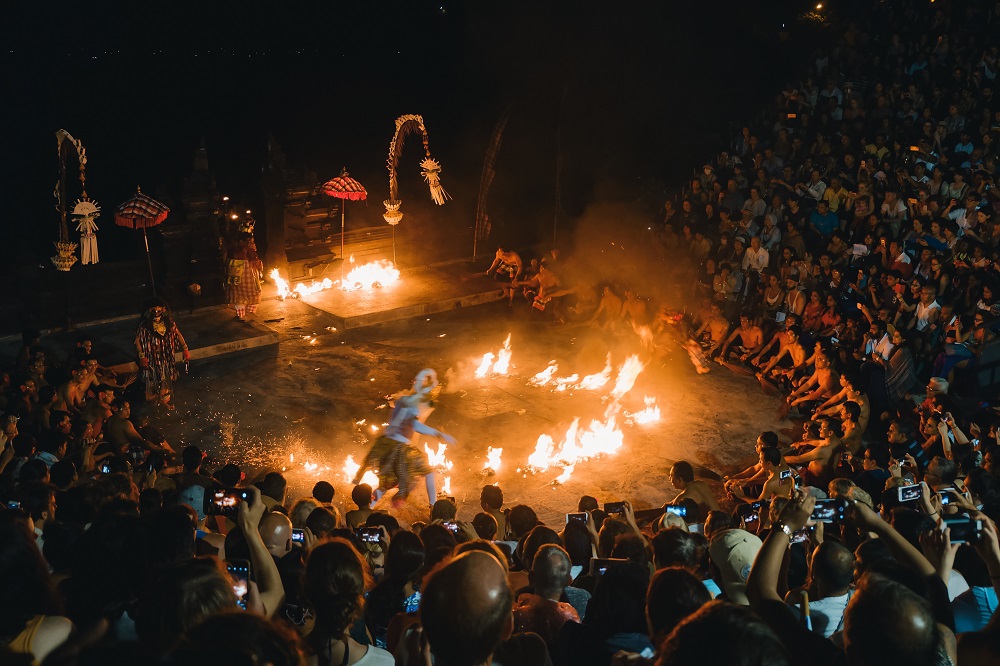
Because of the forest that surrounds the temple, it is notoriously inhabited by long-tailed macaques known for snatching visitors’ belongings so it’s crucial to always stay alert. It is believed that these indigenous monkeys were once the brave warriors of Dang Hyang Nirartha, the Hindu high priest who built the temple.
While it certainly charms visitors for its spiritual history and value, hordes of visitors come to the temple each day to catch the daily Kecak dance based on the Ramayana epic, performed against a wonderful sunset backdrop. Thus, this final destination marks a magical end to your exploration of this fascinating region in the south, where one can find both cultural and leisurely experiences because, after all, “All the sweetest winds, they blow across the South.”

